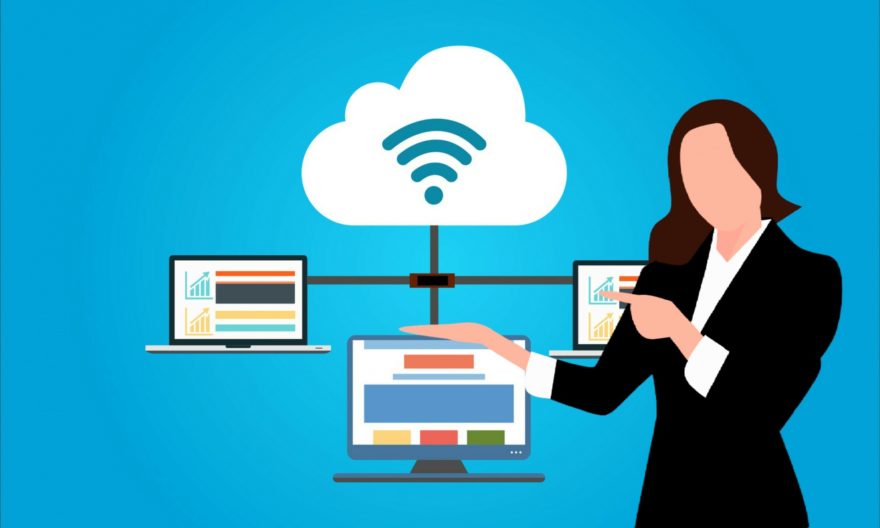
Everything is Data. From our social media posts to the feedback form we fill in the restaurants, everything is Data. This Data is generated from many sources like social media posts, watching youtube videos, upload a document on your Google drive, even liking some posts on Facebook considered as Data generation. Edge Computing is a kind of distributed computing which helps us to generate and transfer data very fast. Here are some fun facts about Data generation on the internet.
Today, we are more than 7.9 billion people inhabited on earth, and more than 53% of the world population use the internet everyday, Is this enough? no! To know more here is the link of a nice article that explains about how much data is generated on the internet everyday.
Let us see the larger picture, according to Domo’s research, 2.5 quintillion bytes of data are created everyday and 1 quintillion is a number followed by 18 zeros. So as we can understand now, Data is everything. Wait! we are discussing about data created by only users, what about machines like sensors, gadgets, appliances? Here comes the IoT(Internet of Things) device. Before going further on to Edge computing let understand IoT first.
IoT (Internet of Things)
We can define IoT as a hardware device such as a sensor, which is connected to the internet and capable of generating, transmitting, and receiving data over the internet. One simplest example of an IoT device is a weather sensor, which observes the weather conditions and sends data to the server, server will process this data and give us a result like weather predictions. Let’s observe our day-to-day life and we realize that there are so many places where we use IoT. At our offices, we use CCTV camera, which is directly connected to the server, Home security appliances, Biometric cybersecurity scanners, smart sensors in malls and megastores, smart watches which stores your health report daily, In Industries, sensors are used to collect data from a different machine and store it to the server. We can dive into more and more examples. Now we realize the scale of data generated through these devices.
What is Edge Computing?
To understand Edge computing let’s take an example. Suppose we are working in some chemical factory and when we talk about chemicals, there is a risk involved because some chemicals are too dangerous to handle and if we don’t handle them carefully, we might face an explosion and face many casualties. To handle these chemicals and their reactions we are taking help of an IoT device. IoT devices can be some kind of valves or actuators. This IoT device transmitting and receiving some crucial data about chemical reactions over the internet to a cloud server. Now cloud server processes the information and sends back instructions to the IoT device. What do you think how much time it will take 2 seconds, 5 seconds. In the case of low bandwidth, it might take more time. This is too much time. Up till now, the chemical reaction could have shown the worst results like an explosion.

Here latency plays the key role. We don’t get a result in time and due to that, we face tragic consequences sometimes. This is true about other areas like smart cars, smart home appliances, bank security, retail industries etcetera. What if some thief enters in home and your home IoT device doesn’t alert you in time.
The answer of these kinds of problems is Edge Computing. Edge Computing is a kind of distributed computing in which we try to get data generation source and processing server as close as possible. In Edge computing, we use a hardware device, which is called an edge server, and place it on the edge of our local network. So we have at least one edge server in every local network. There might be two, three, and more. Whenever some data needs to be processed and require an instant result, the edge server performs processing and gives instant results from the edge of our local network. These edge servers are also connected with public or private clouds further. So we can have a fast response with the huge data storage benefit of the public cloud.
According to IBM today 10% of data is processed by edge, by 2025 this number can grow to 75% and the evolution of 5G network will prove as fuel to Edge Computing.
The other way to achieve Edge computing is to make your device smart and capable of processing data. let say you have a CCTV camera in the bank. Now your camera should be capable of making decisions when it captures the undesirable event in the bank like theft. In this case, data will not transfer over the network. But our IoT devices are capable of handling it and making decisions in real-time. Another example of this is fingerprint detection, face recognition in smart phones. And self-driving car which is loaded with many CPUs to make instant decesions.
Summary
Edge computing is a feature of the internet. With Edge computing we can improve our latency on the internet. We can create a safe and secure distributed environment and with the help of IoT and 5G, Edge computing will bring revolution to the Internet.
- Edge Computing, Revolution of the Internet - May 16, 2021
- What makes Salesforce CRM irresistible to Businesses? - May 2, 2021

Great article!